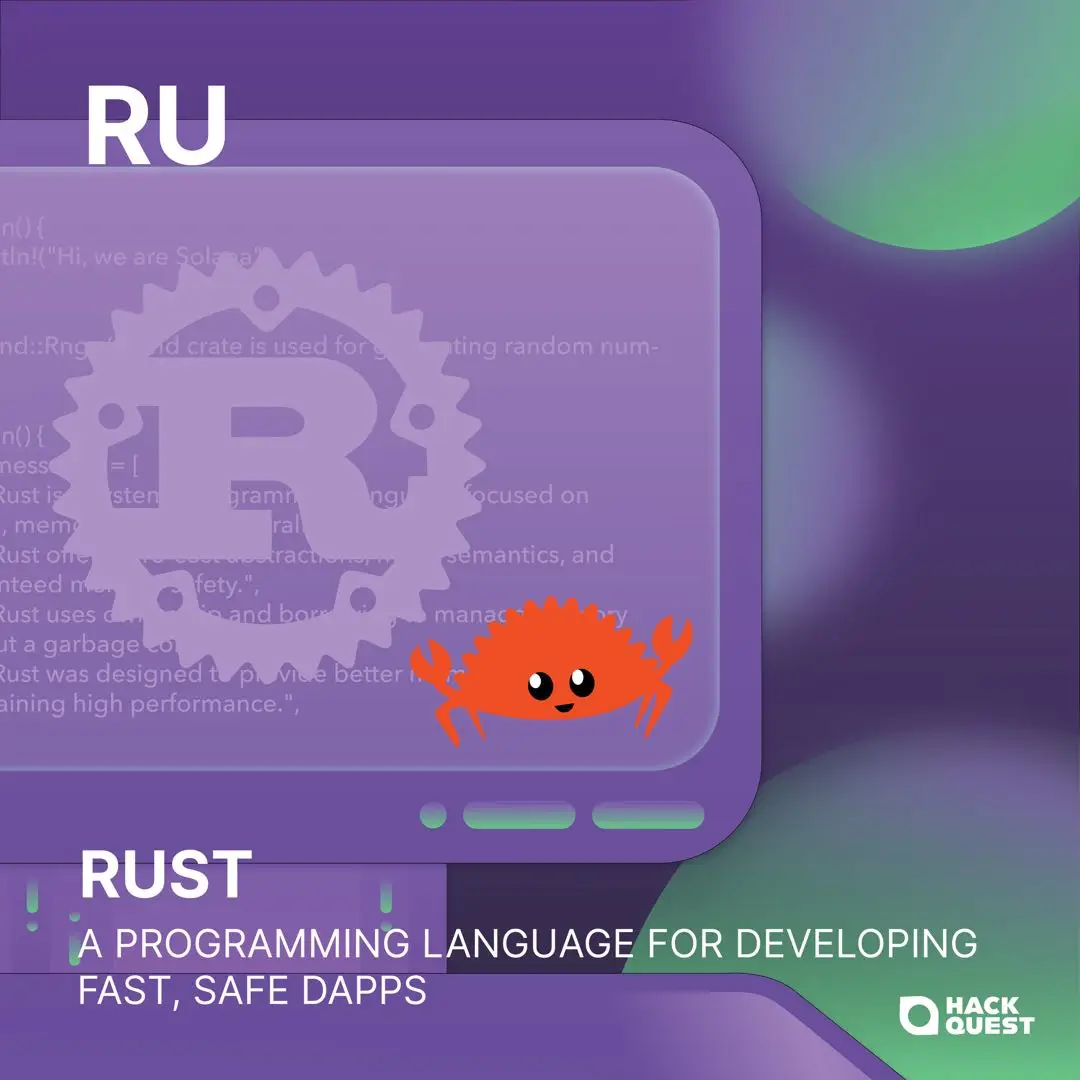Back
Rust
Solana
By HackQuest
Apr 9,20242 min readWelcome to the world of Web3, where cryptocurrencies, blockchain, and a unique culture converge. Entering the world of Web3 can be both thrilling and overwhelming, especially when faced with the seemingly cryptic language used by enthusiasts. Don't worry if you feel they sound like some secret codes, we are here to unravel their meaning. In this article, we are going to introduce [RUST].

What is RUST?
Developed by Mozilla Research, Rust is a relatively young programming language (first released in 2015) designed with a focus on memory safety, performance, and concurrency. Unlike some older languages, Rust helps prevent common programming errors that can lead to security vulnerabilities and crashes. This makes it ideal for building secure and reliable applications, especially crucial in the world of blockchain and Web3.

Why is Rust a Good Fit for Web3?
Several key features make Rust a great choice for Web3 development:
Safety
RUST's borrow checker ensures memory safety without needing a garbage collector. This makes it exceptionally secure for developing applications where security is paramount, such as in the handling of financial transactions on the blockchain.
Concurrency
RUST's ownership model enables efficient and safe concurrency, a must-have feature for scalable dApps that can handle multiple transactions or operations simultaneously.
Performance
Comparable to C and C++ in terms of speed, RUST enables the development of high-performance applications with minimal overhead, crucial for the real-time processing needs of blockchain technologies.
Community and Ecosystem
RUST has a vibrant and growing community, with increasing support for web3 development. There are numerous libraries and tools specifically designed for blockchain development, making it easier for developers to jump in and start creating dApps.
Examples of Rust in Web3:
Here are some popular Web3 projects built with Rust:
●Solana: A high-performance blockchain platform utilizing Rust for its core functionalities.
●Filecoin: A decentralized storage network that leverages Rust for its secure and reliable data storage capabilities.
●Cosmos: A network of interconnected blockchains where many projects use Rust for their smart contract development.

Is Rust Easy to Learn?
While Rust is known for its power and security, it has a steeper learning curve compared to some beginner-friendly languages. However, the growing popularity of Rust in Web3 has led to a wealth of online learning resources, tutorials, and a supportive developer community. You may find a course on HackQuest.
Conclusion
RUST in the context of web3 refers to a powerful programming language that's carving a niche for itself in the development of secure, efficient, and scalable decentralized applications. Its focus on safety, performance, and concurrency makes it an ideal choice for blockchain technologies. Whether you're a developer looking to dive into web3 or simply curious about the technology shaping the future of the internet, understanding RUST and its application in the decentralized space is a great starting point.